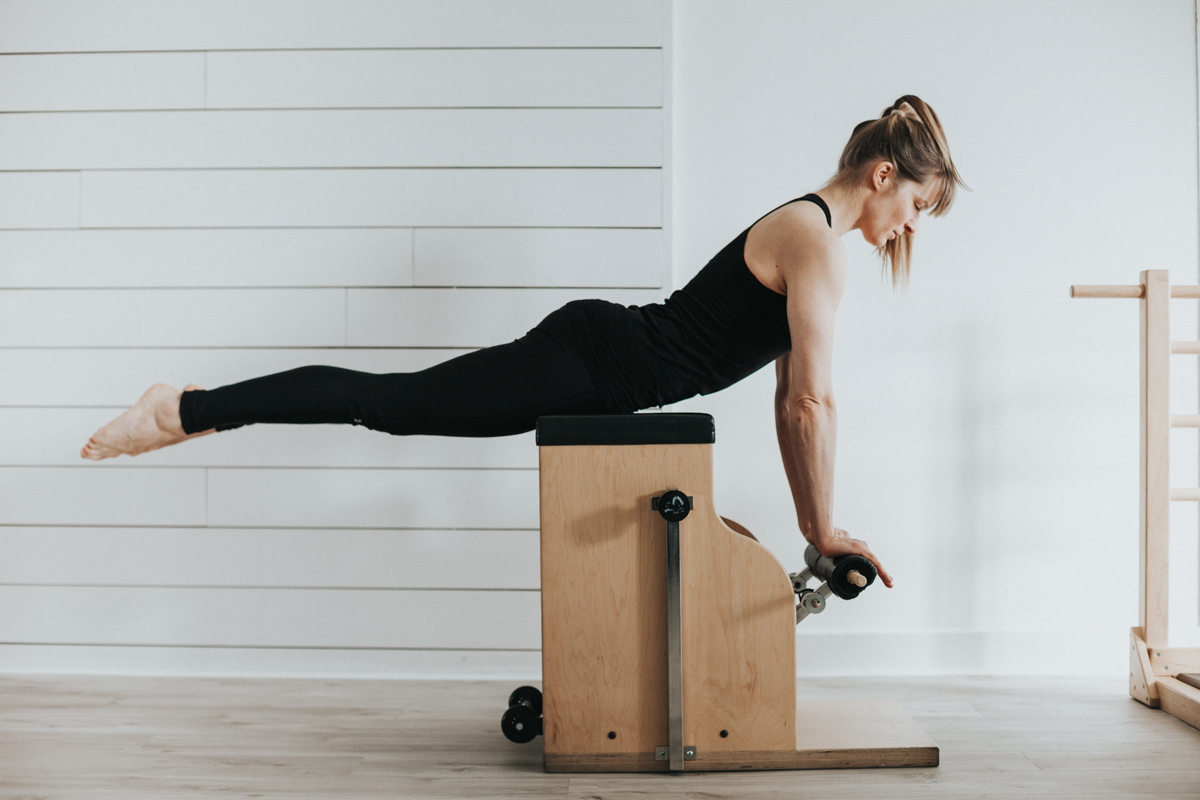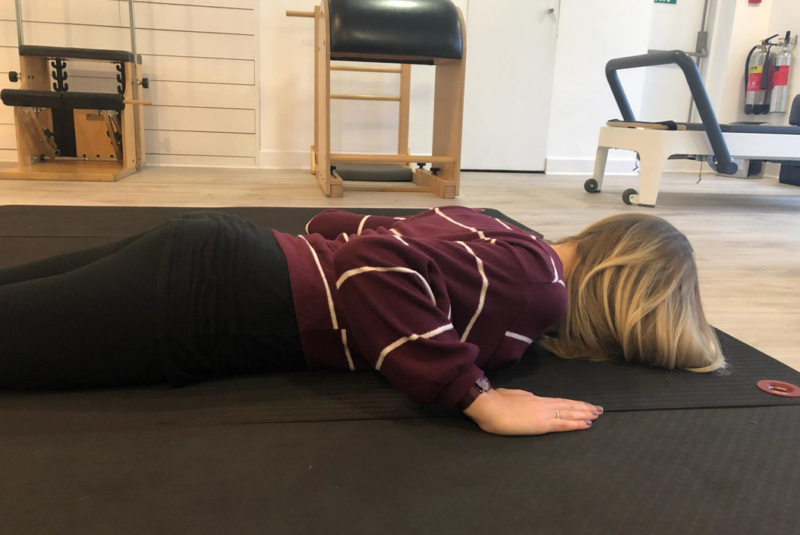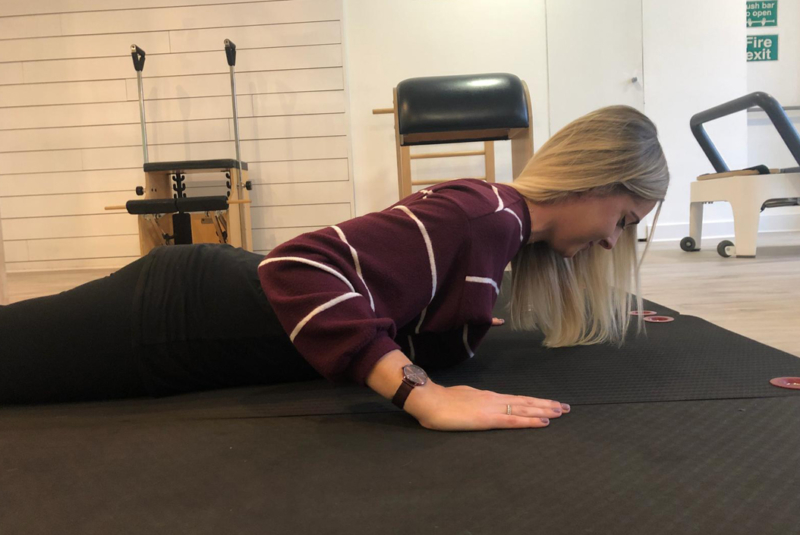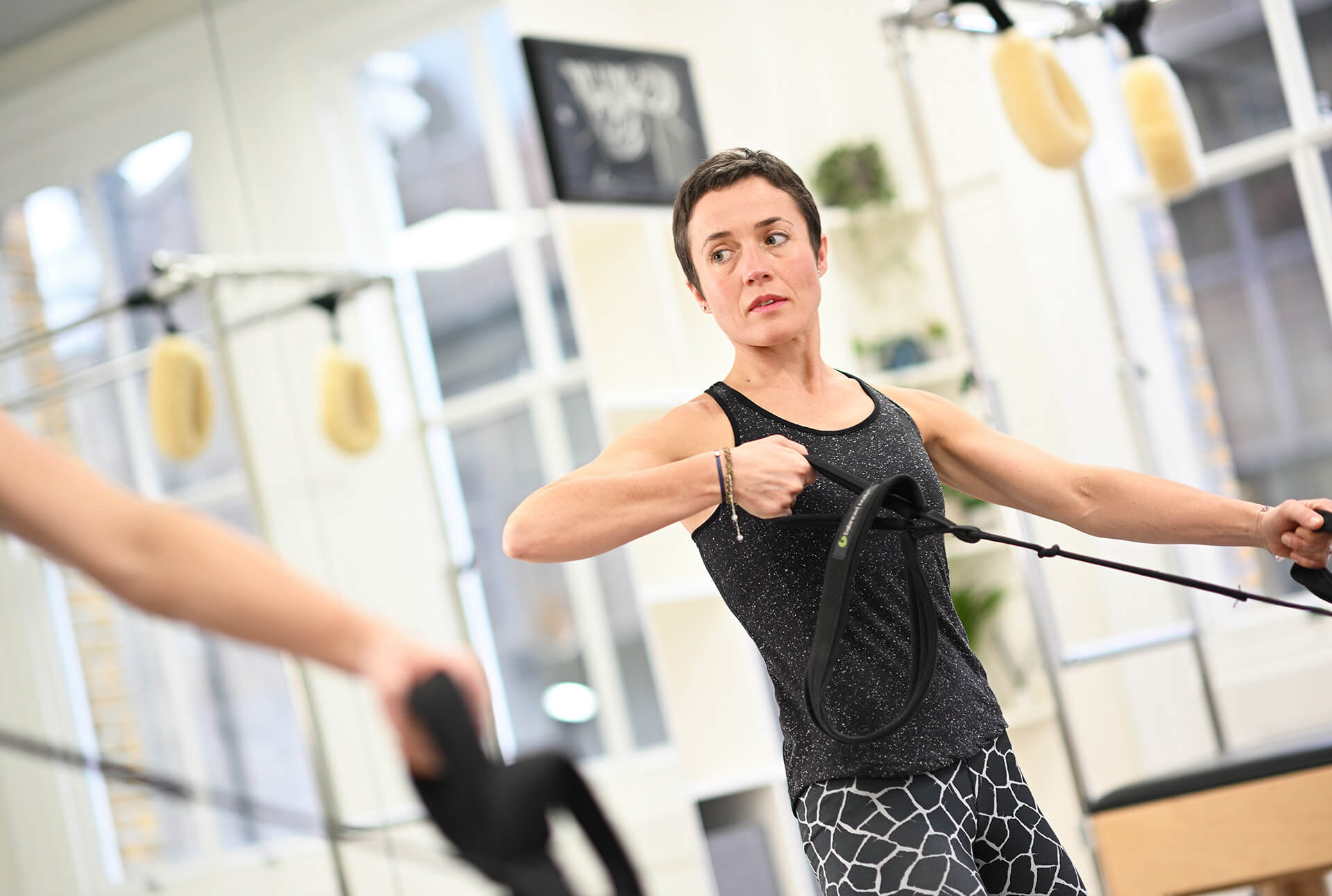The Pilates Swan is a popular extension exercise which can be performed on the mat and equipment. It is often used in Pilates classes to balance forward flexion exercises like the hundreds.
This exercise has numerous physical benefits. These include: stretching the abdominals, lengthening the hip flexors and targeting the arm muscles.
The Swan also improves posture and reduces the risk of back pain through strengthening the back and mobilising the mid/upper (thoracic) spine.
Despite the many advantages of practising the Swan, this exercise also has potential downsides. Namely, if not performed properly, it (as with similar Yoga exercises Cobra and Up Dog) can cause back pain.
However, learning how to perform the Swan with precision will help you reap its benefits and avoid any potential problems. Read on for how-to instructions and to find out how to avoid back pain with this Pilates exercise.
Warning: The Swan is not suitable for people with conditions such as acute stenosis. If you have concerns about this exercise or about your back pain, seek advice from a health care professional before attempting it.
How to do the Pilates Swan exercise
Set up
Lie face down on a mat with your forehead resting on a towel or hovering just above it. Place your hands either side of your chest with your palms facing down.
The exercise
- Inhale to prepare.
- Exhale and connect your pubic bone with the mat.
- Next, press your hands into mat and send your elbows back towards your heels. As you do so, allow your chest and upper spine to peel off the mat into an upward arc. Make sure your lower abdominals are engaged.
- For the full version, start to straighten your arms and bring the rest of your spine and hips into extension. Your thighs should be off the mat.
- Remember to keep sending your tail bone down toward the mat.
- Pause and inhale at the top.
- Exhale and start to lower the body back to the mat. Do so by rolling over your thighs, hips, lower abdominals to your chest until you are back in the starting position again.
- Repeat this sequence 3 – 5 times.
Tips to avoid back pain in the Swan
These tips apply to Swan on the mat, chair and reformer.
Abdominals
Your abdominals aren’t working if they are sagging towards the floor. So protect your back and keep your abdominals lifted and active.
Glutes
A gentle engagement of the glutes can protect your lower back but squeezing them can cause problems. Make sure not to over-engage your glutes during this exercise.
Pelvis
Allowing your pelvis to tilt so that your bum sticks out during this movement can create compression in your lower back.
To combat this, keep your tail bone pointing towards the ground. Your hip bones at the front should feel like they are “lifting up”.
Spine
It’s important to extend your spine evenly during the Swan. If you don’t you’ll end up moving excessively in the segments in your lower back, which can create a painful pinching sensation.
To avoid this, think about lengthening the spine as well as curving upwards as you move into extension. This change in emphasis should help take the pressure off your lower back.

Pilates swan modifications
For those still experiencing discomfort, modifying this exercise and using props and the equipment is advisable.
To modify the Swan, reduce your range of movement. Doing so means you can avoid putting pressure on your lower back at the same time as targeting the mid-spine area.
Why is this helpful? Well, a stiff mid-spine can be the reason you’re getting back pain with this extension exercise.
So, instead of performing the full Swan and bringing your upper body off the mat, focus on mobilising the middle and top part of your spine. To do this, perform the first steps of the exercise and stop when your lower ribs are still on the mat. Return to the starting position and repeat.
Using a prop or the equipment can also help you create the perfect upward bend in your spine.
Using a foam roller: instead of placing your hands by your sides, start by resting your arms on a foam roller. Next, roll the foam roller towards you and use it as a lever to send the spine arcing upwards. Keep the range of movement small with this Swan variation and focus on extending the mid-spine.
If your back pain persists, it’s time to see a Physio or a clinical Pilates instructor. They can help to identify the cause of your pain and prescribe the right exercises for your condition.
If you get back pain when you do these movements why not book in to see one of our clinical Pilates instructors or physios.
Education is key:
These blogs are designed to give information to everyone, however, it is important to remember that everyone is different! If you have not seen one of our therapists and have any questions about injuries, what you have read or whether this may be useful to you, please just ask. We are more than happy to help anyone and point you in the right direction. Our biggest belief is that education is key. The more you understand about your injury, illness and movement, the more you are likely to improve.






